- Administrator
- Albums and Singles
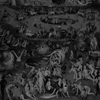
Xela and I got off to an unfairly bad start, as I was first exposed to John Twells through his anomalous black metal opus (The Illuminated) in 2008 and decided that his work just wasn't for me.  Curiously, that very album began the trilogy that this album finishes, but the only real trait that the two albums share is a devotion to all things bleak, murky, and ominous, this time manifested in beautifully forlorn, slow-motion drone.  That evolution is a welcome one.  In fact, the first half of this album is easily one of the best pieces that I have heard all year.
Having already ambitiously tackled nautical horror with 2006's The Dead Sea, it was only natural that Twells would eventually decide to tackle horror on a much deeper and metaphysical level.  He certainly did not shy away from the challenge, as this trilogy is very Milton/Dante-esque in both content and scope, with the emphasis placed quite squarely on the infernal side of life (and the afterlife).
As befits a fascination with the fall of man and the torments of hell, Twells' recent sound has been a rather scorched, gnarled, and corroded one, which is both a blessing and curse.  That hissing murkiness is very effective at conveying an atmosphere of  vague dread and hinted-at nightmarishness, but it also has a tendency to obscure the content or even to become the focus itself.  It is hard to keep a 20-minute piece compelling on atmosphere alone, but John has recently become very adept at combining his textural genius with similarly inspired composition and melody.  The Sublime begins exactly where The Divine's stunning "Of The Light And Of The Stars" left off, burying heavenly drones and swells beneath a patina of rot and decay in the opening "Lust & Paradise."  The effect is both achingly beautiful and crushingly sad.
"Lust & Paradise" is definitely the stronger of the two pieces, due to its steady throb, spectral melody, and slow-burning accumulation of power.  The closing "Eve's Riposte" has some inspired moments too though, especially the simple melancholy melody lurking beneath all the mist and rumble.  It would actually be the perfect languid come-down for the entire trilogy if it wasn't for for a monotonous and increasingly invasive major chord swell that consumes most of its second half.  I was initially horrified that Twells' was ending such an audaciously ugly and dark-hearted undertaking on an uplifting note, but some discordant grinding and buzzing mercifully arrived at the very end to plunge everything into discordance and hopelessness once more.  That late album derailment aside, this remains a remarkable effort: few albums can boast an entire side of absolute perfection like "Lust & Paradise."
(Note: The Sublime was originally issued on cassette by Digitalis in 2010 with extremely cool cover art, but that version is long unavailable)
Samples:
 
 
Read More
- Administrator
- Albums and Singles
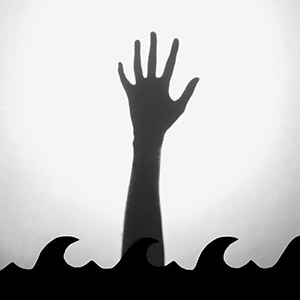 Concluding a trilogy of releases that began with 2008's Indications of Nigredo and 2010's Order4, Closure... is a dense, operatic work of noise and harsh electronics. Tied together as an album and an overarching narrative, it is a bleak and grating disc that conveys violence throughout. It is a challenging and complex work, but a multifaceted one that takes multiple playings to deconstruct and fully appreciate.
Concluding a trilogy of releases that began with 2008's Indications of Nigredo and 2010's Order4, Closure... is a dense, operatic work of noise and harsh electronics. Tied together as an album and an overarching narrative, it is a bleak and grating disc that conveys violence throughout. It is a challenging and complex work, but a multifaceted one that takes multiple playings to deconstruct and fully appreciate.
IRM—the trio of vocalist Martin Bladh, Erik Jarl, and Mikael Oretoft—take cues from a multitude of difficult genres, resulting in nine pieces that never have the band relenting in darkness, either through overt force or insinuated maliciousness.About half of the songs that make up the album are blunt, confrontational outbursts of noise."Closure I" is all massive percussion and shrill squeals of electronics.Bladh's vocals appear nearly indecipherable here and throughout the remainder of the album in a similar way:buried in a pool of flanging and filtering that give his voice a sinister, otherworldly quality.Jerky vocals and abusive rhythms abound on "Closure IV" as well, having less of a distorted, and more of a militant industrial sound to it.
Without the percussion, "Closure II" might not be as immediately intense, but the buzzing and aggressive electronics act as a forceful accompaniment to the vocals."Closure VII" is another piece where the ensemble channels aggression without the rhythmic additions.Instead, it is Bladh's vocals doing battle with layers of synth distortion, building and compounding to an explosive wall of noise climax that is not far removed from Macronympha’s best work.
The trio dial back the dissonance for other parts of the album, resulting in more pieces that lurk rather than assault.For most of its duration, "Closure III" is a calmer, quieter piece of music.Ticking clocks, spoken word and what sounds like sheets of rain conjure a mood, albeit a gloomy one.Similarly, much of "Closure V" stays on the ambient end of the spectrum, with scraping cello strings by Jo Quail buried under buzzing electronics and a dark, sinister bass throb.Spoken word and abrasive sonics enhance the bleakness of "Closure VIII," with a more conventional and calmer bass guitar melody that underscores it.
There is clearly an central narrative to Closure…, but the heavily processed vocals make it anything but clear.There is the recurring motif of both performance and execution, and the intersection of both, which is bolstered by the shadowplay images presented throughout the accompanying booklet.Even divorced from its thematic content, however, Closure… is a haunting and harrowing work of harsh electronics that carries just as much intensity in its music as it does the words.
samples:
 
Read More
- Administrator
- Albums and Singles
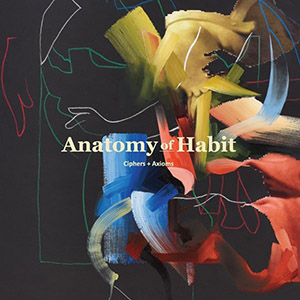 Following up their debut LP and EP, Chicago’s post-everything supergroup Anatomy of Habit (featuring members of Bloodyminded, Tortoise, and Indian, amongst many other projects) continue their penchant for dramatic, expansive rock-tinged music. For their Relapse debut, they provide two lengthy, side-long pieces that distill everything that was great about their early releases into a cohesive, rich album that stays faithful to their previous work, while adding an extra layer of polish.
Following up their debut LP and EP, Chicago’s post-everything supergroup Anatomy of Habit (featuring members of Bloodyminded, Tortoise, and Indian, amongst many other projects) continue their penchant for dramatic, expansive rock-tinged music. For their Relapse debut, they provide two lengthy, side-long pieces that distill everything that was great about their early releases into a cohesive, rich album that stays faithful to their previous work, while adding an extra layer of polish.
From the opening moments of "Radiate then Recede", AoH's influences are not hard to place.The pounding drums, subterranean bass and caustic, drilling guitar bear a clear early Swans influence, but with a bit more restraint and less overt violence.The production adds a lot to this differentiation, with the use of reverb and processing bringing a hint of The Cure and Joy Division to their sound.Influences, yes, but they do so without directly aping any of those projects directly, retaining their own distinct style.
At over 20 minutes "Radiate And Recede" works more like a suite than a single song, with the band working through various configurations of the aforementioned sounds.Sometimes sludgy and shambling, other times leaning into chugging metal riffs, it never stops moving nor becomes stagnant.Vocalist Mark Solotroff, the de facto leader of this ensemble, delivers vocals that are the polar opposite of what he is known for from Intrinsic Action or Bloodyminded.Rather than manic screams or shouts, he is detached, calm and clinical.Amongst the dirge and darkness constructed from distorted bass and guitar melodies, he clearly reads off scientific terms with an uncomfortable detachment.
On the other half of the record, "Then Window," the group retains the mood but changes the template a bit.Early on, guitar noise dissolves into militant drumming and wobbling bass rattles.The piece transitions from a looser opening into a more tautly structured passage of almost 1970s classic heavy metal, juxtaposing the differing styles.It is depressive and muddy, with an almost shuffling drum groove driving it.
By the middle it becomes a massive ambient expansive, with Solotroff hypnotically repeating the title of the album like some sinister documentary narrator, with the band throwing out expansive, fuzzy noise paired with the guitar melody present since the beginning of the piece.Compared to "Radiate then Recede" it is clearly a more static, frozen piece, but one that captivates all the same.
There are not gigantic strides made stylistically between the first two AoH releases and Ciphers + Axioms, but instead there is a greater cementing of their identity, as well as a more fully realized sound.Unlike most supergroups where each artist is pushing their "thing" harder than the rest, everyone here fits perfectly with one another.They might sound nothing like each other, but parallels are there between AoH and Kevin Martin's God in that respect.A gathering of musicians who mesh seamlessly together, each acting like a force multiplier to the other to result in a dense, heavy, yet thoroughly enthralling album.
samples:
 
Read More
 Following up their debut LP and EP, Chicago's post-everything supergroup Anatomy of Habit (featuring members of Bloodyminded, Tortoise, and Indian, amongst many other projects) continue their penchant for dramatic, expansive rock-tinged music. For their Relapse debut, they provide two lengthy, side-long pieces that distill everything that was great about their early releases into a cohesive, rich album that stays faithful to their previous work, while adding an extra layer of polish.
Following up their debut LP and EP, Chicago's post-everything supergroup Anatomy of Habit (featuring members of Bloodyminded, Tortoise, and Indian, amongst many other projects) continue their penchant for dramatic, expansive rock-tinged music. For their Relapse debut, they provide two lengthy, side-long pieces that distill everything that was great about their early releases into a cohesive, rich album that stays faithful to their previous work, while adding an extra layer of polish.
- Administrator
- Albums and Singles
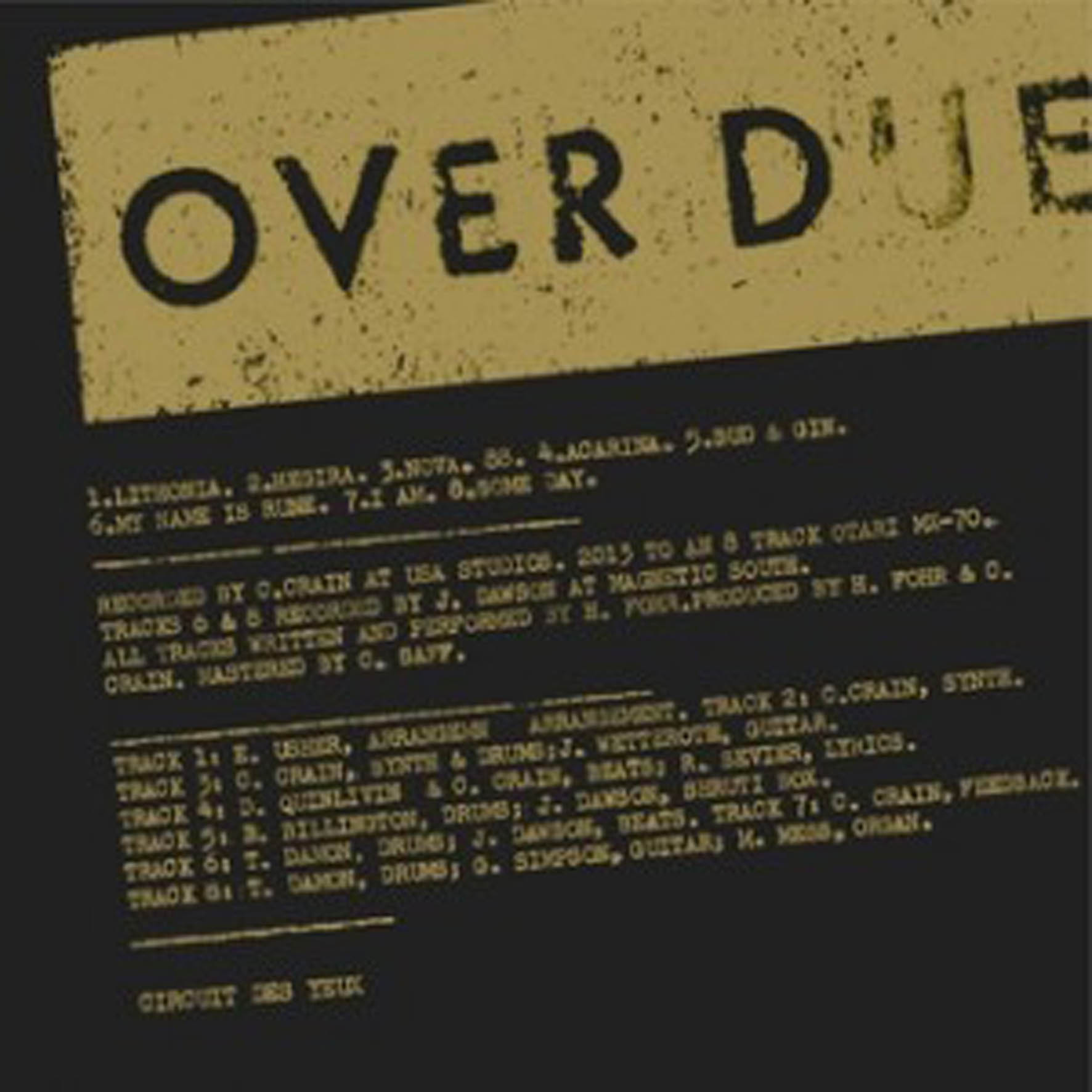 After three weeks of listening to Haley Fohr's fourth (or fifth) album, I still have absolutely no idea what to make of it, which is probably a good thing (unless it is not).  In any case, Overdue finds Fohr further distancing herself from her abstract experimental past and embracing an equally strange present (and future?) that resembles some kind of unholy mixture of Zola Jesus, Xiu Xiu, Teenage Jesus and the Jerks, Codeine, and an exorcism.  As cool as that admittedly sounds, it does not resonate nearly as much with me as Fohr's earlier work.  The sheer force and conviction on display is still quite impressive though.
After three weeks of listening to Haley Fohr's fourth (or fifth) album, I still have absolutely no idea what to make of it, which is probably a good thing (unless it is not).  In any case, Overdue finds Fohr further distancing herself from her abstract experimental past and embracing an equally strange present (and future?) that resembles some kind of unholy mixture of Zola Jesus, Xiu Xiu, Teenage Jesus and the Jerks, Codeine, and an exorcism.  As cool as that admittedly sounds, it does not resonate nearly as much with me as Fohr's earlier work.  The sheer force and conviction on display is still quite impressive though.
Overdue opens in both strong and deceptive fashion, as "Lithonia" is a very structured and melodic piece built upon a beautiful string arrangement that is impossible not to compare to Zola Jesus' collaboration with Jim Thirlwell (Versions).  While it is arguably the album's strongest song, Fohr never returns to that aesthetic ever again.  In fact, there is no clear stylistic thread to the album at all–the only real constant is Haley's deep, powerful voice and perhaps a tendency towards unadorned, stripped-down songcraft.  That makes for a very schizophrenic listening experience, as it almost feels like Fohr is rapidly cycling through a different number of guises hoping to find one that fits.  If this were Circuit Des Yeux's first album, I would chalk that up to Fohr's youthful inability to properly harness her incredible intensity, but she has been doing this long enough that it can only be a bizarre and deliberate artistic choice instead.
Overdue's most frequently explored territory is a kind of melancholy-to-outright-gloomy acoustic folk best represented by pieces like "My Name is Rune" and "Hegira."  In keeping with the disorienting theme of the album though, even otherwise straightforward pieces gradually become musically idiosyncratic (which is appropriate, given the uniqueness of Fohr's vocals).  "Rune" has the most subtle twist, as the minor key arpeggios are eventually joined by a warm and gently pulsing organ chord.  "Hegira," on the other hand, features some unexpected electric guitar snarl and lush, goth-inspired synthesizer chords, while the otherwise pleasant and sprightly instrumental "Bud & Gin" is gradually overwhelmed by pounding drums and wordless warbling before morphing into a backwards coda.
Notably, the most striking song on the entire album is also the simplest: "I Am."  In fact, it almost sounds like it could have been made up and performed on the spot, aside from the multiple guitar tracks: it is basically just a few grime-encrusted chords, a little vocal distortion, and an almost-possessed-sounding refrain of "I want out I want out I want out I want out."  Again, I am reminded of other artists (Jarboe and Lydia Lunch at their most hostile and unhinged), but there is nothing actually derivative occurring–this is simply how direct, blunt, wild-eyed rage sounds.
The remainder of the album calls to mind early '90s slow-core like the aforementioned Codeine: plodding, slow-motion beats and distorted minor key guitar chords, the sole  twist being that Fohr's unique vocals remain at their usual near-operatic intensity.  One song ("Acarina") warps that formula quite a bit further though, sounding like an unplugged Codeine accompanied by a gibbering, barking insane person and some kind of ritualistic chanting.  I am not sure that that is necessarily a good thing, but it is certainly a one-of-a-kind thing, which I suppose is its own reward.
Ultimately, I could not connect with most of Overdue's songs, but it still feels like a success artistically, even if it might be a bit of a transitional one.  Fohr is taking a difficult route with her work, gradually stripping away all of her previous electronics and artifice to create something raw, honest, and direct.  That might not be particularly easy on my ears, but it is not meant to be and the intent is certainly laudable (even though I love electronics and artifice).  Great art tends to be uncomfortable and this is flawed great art: even though I wish this album had a more coherent focus and was a bit less oppressively dark, I cannot help but admire the sheer force and otherness of Haley's personality.  In fact, I suspect that the detached medium of an album is probably a hopelessly muted way to experience Circuit Des Yeux, as it is easy to imagine these songs being scarily riveting in a live context.
 
Read More
- Administrator
- Albums and Singles

Artist: Various Artists
Title: John Barleycorn Reborn: Rebirth
Catalogue No: CSR150CD
Barcode: 8 2356650632 4
Format: 2 x CD in jewelcase
Genre: Traditional Folk, Dark Folk, Ballads
Shipping: 21st November
Pre-Order 2CD
The double-edged nature of the harvest season can be both a blessing and a burden; a vision of superabundant excess than can’t possibly be consumed before it rots. Our pre-industrial forebears expended considerable time and energy on conserving some of autumn’s bounty against the scarcity of winter… yet somehow, people would survive to till their fields again the following spring. The compilers of the first ‘John Barleycorn Reborn’ compilation, released in 2007, faced a similar embarrassment of riches - a testament both to English folk heritage and the health of the contemporary folk music scene. So here we have the second crop from that original sowing. Originally released for download only, now finally available as a stunning double CD, with every track completely remastered to the highest quality. 33 tracks from the cream of current dark British Folk music.
Tracks:
Disc 1: 1. Magpiety - 'The Rolling Of The Stones' | 2. The Story - 'All Hallow's Eve' | 3. Telling The Bees - 'Wood' | 4. David A Jaycock - 'Bonny Jaycock Turner' | 5. Yealand Redmayne - 'Oh My Boy, My Bonny Boy' | 6. Charlotte Greig And Johan Asherton - 'The Bold Fisherman' | 7. Steve Tyler - 'Tierceron'| 8. The Wendigo - 'The Wendigo' | 9. The Owl Service - 'Wake The Vaulted Echo (Tigon Mix by RAF)' | 10. Far Black Furlong - 'The East Room V' | 11. Xenis Emputae Travelling Band - 'Brightening Dew' | 12. Sedayne - 'Corvus Monedula' | 13. The Straw Bear Band - 'Bear Ghost' | 14. Novemthree - 'Scythe To The Grass' | 15. Paul Newman - 'Lavondyss' | 16. James Reid - 'Kingfisher Blue' | 17. JefvTaon - '(Digging The) Midnight Silver' | 18. Wooden Spoon - 'Children's Soul' | 19. The Big Eyes Family Players - 'A Dream Of Fires'
Disc 2: 1. Sungod - 'Improvisation At Kilpeck, June 2007' | 2. Clive Powell - 'Ca The Horse, Me Marra' | 3. Mac Henderson Of Grand Union Morris - 'Jack In The Green' | 4. Cunnan - 'Seven Sleepers, Seven Sorrows' | 5. Orchis - 'The Silkie' | 6. Twelve Thousand Days - 'Thistles' | 7. Novemthree - 'Harvest Dance' | 8. James Reid - 'Elder' | 9. Mary Jane - 'When I Was In My Prime' | 10. Daughters Of Elvin - 'Ognor Mi Trovo' | 11. Misericordia - 'De Poni Amor A Me' | 12. Venereum Arvum - 'Child 102 (Lily Flower Mix)' | 13. The Anvil - 'John Barleycorn Must Live' | 14. Sunshine Coding - 'The Old Way'
Read More
- Administrator
- Albums and Singles
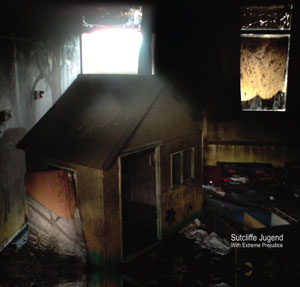
Artist: Sutcliffe Jugend
Title: With Extreme Prejudice
Catalogue No: CSR143CD
Barcode: 8 2356650692 8
Format: CD in jewelcase with slipcase
Genre: Power Electronics / Experimental
Shipping: 21st November
Pre-Order CD
Harsh extreme electronic pioneers Sutcliffe Jugend return with an album of all new material. Three years in the making, and with numerous reworkings, "With Extreme Prejudice" finds Sutcliffe Jugend at the top of their game. Forcing the listener to question their own prejudices and taboos, as modern man struggles to confront and control his inner demons. Musically and lyrically this is SJ's most varied album to date, ranging from harsh electronic onslaughts to a new kind of musical oblivion. Production and sound values are closer to industrial music than ever before, creating a very different feel to their previous filthwork "Pigdaddy". Enter if you dare, the very twisted and real world of Sutcliffe Jugend as they execute With Extreme Prejudice. Includes an 8 page booklet and slipcase.
Tracks: 1. With Extreme Prejudice | 2. Carnage | 3. Beaten | 4. Empathiser | 5. Bound | 6. Lucky | 7. I Have Kissed This Sick, Sick World Goodbye | 8. Death Of A Post Christian Humanist | 9. Oblivion | 10. Fuckrage | 11. Fall Of Utopia
Read More
- Administrator
- Albums and Singles

Artist: Machinefabriek
Title: Veldwerk
Catalogue No: CSR156CD
Barcode: 8 2356650642 3
Format: CD in digipak
Genre: Drone / Ambient / Field Recordings
Shipping: 21st November
Pre-Order CD
Sublime drone music and field recordings by Rutger Zuydervelt. 'Slovensko I & II' are best seen as a travel diary, recorded in Slovakia. RZ made 'sound snapshots' with a small digital recorder. A major influence both while recording and assembling the tracks was Chinese sound artist Yan Jun. 'Rusland' is a sound collage comprising field recordings and sections of live performances made in Russia. An incredible adventure and culture shock with long train journeys, bizarre venues and amazing people. 'The Breaking Water' can be heard as a sonic portrait of Rotterdam's famous Erasmus bridge. It includes recordings taken from both on and beneath the bridge, along with further sounds from the river that it crosses, the Nieuwe Maas. 'Floor & Radio' is a contrast to the outdoor pieces recorded for the the installation 'Licthung' in Radolfzell, Germany. Contrasted against the outdoor silence was the squeaking floor in the guest house and the distorted signal and static from the radio. Sometimes there's music in everything. Makino Takashi asked RZ to perform a score for his film 'In Your Star'. After a screening in Tokyo, a studio version was recorded. The result is 'Apollo', a sonic journey to space and beyond. Digipak.
Tracks: 1. Slovensko I (7:04) | 2. Rusland (17:01) | 3. The Breaking Water (9:57) | 4. Floor & Radio (5:12) | 5. Apollo (21:17) | 6. Slovensko II (7:00)
Read More
- Administrator
- Albums and Singles
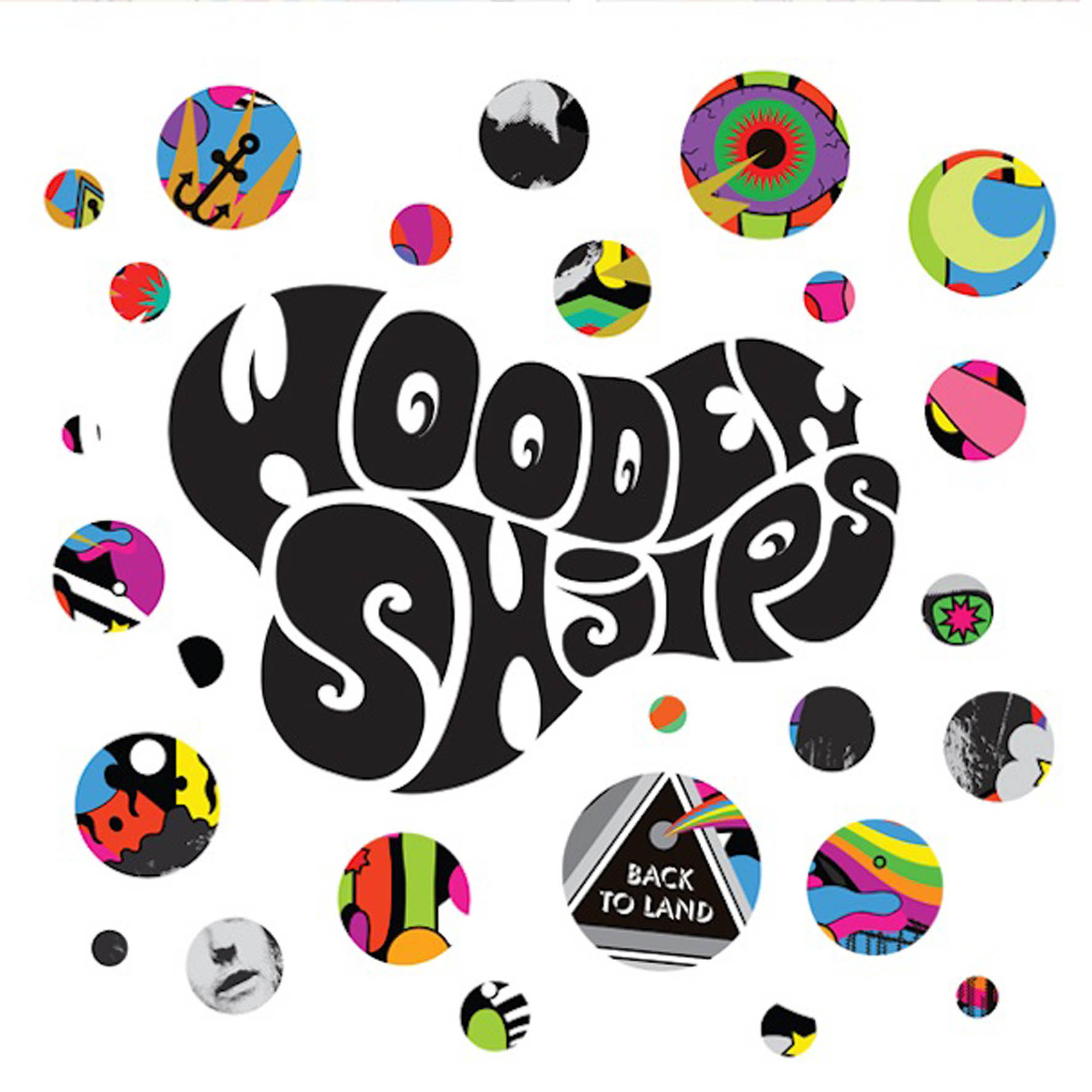 This is a bit of a surprising album, as it finds one of American's premiere psych-rock bands noticeably toning down the more psych-inspired aspects of their work in favor of a more sun-dappled, spacious strain of rock.  Fortunately, that move towards a cleaner, more melodic sound coincides with an impressive leap forward in their songwriting, resulting in a handful of great, memorable songs amidst all the newly subtle Spacemen 3/Suicide/Hawkwind worship.  The full album is still a bit too formulaic overall for my liking, but the Shjips demonstrate they know how to craft a killer single or two.
This is a bit of a surprising album, as it finds one of American's premiere psych-rock bands noticeably toning down the more psych-inspired aspects of their work in favor of a more sun-dappled, spacious strain of rock.  Fortunately, that move towards a cleaner, more melodic sound coincides with an impressive leap forward in their songwriting, resulting in a handful of great, memorable songs amidst all the newly subtle Spacemen 3/Suicide/Hawkwind worship.  The full album is still a bit too formulaic overall for my liking, but the Shjips demonstrate they know how to craft a killer single or two.
Back to Land is the sort of album that makes me nostalgic for the wide-eyed innocence of my life before I became a music critic, when I could just enjoy an album without thinking about it too much.  I suspect that the old me would have liked Back to Land a lot more than the current me, as Wooden Shjips sound great doing what they do.  Unfortunately, my initial thrill with the opening title track began to yield diminishing returns as its formula was repeated again and again as the album unfolded.
It is hard to objectively say whether that is my problem alone, but this is certainly an album where the seams show: most of these songs are built upon little more than a simple, obsessively repeating, Suicide-style organ pattern (though it is sometimes transposed to guitar or bass).  Admittedly, the Shjips pull off a neat trick in appropriating Suicide's aesthetic wholesale and translating it into something resembling driving classic rock, but once I noticed the rigid template, I could not stop noticing it.  These are all quite catchy, propulsive songs, but they are mostly obvious variations on roughly the same catchy, propulsive root.
There are admittedly some divergences though, which are delivered with varying degrees of success.  The fairly straightforward rock of the breezy "These Shadows" is the least interesting of the lot, though it is still pleasant–there just is not anything for more outré-minded music fans like myself to grab onto at all.  "Other Stars," on the other hand, is just flat-out Hawkwind channeling: there is a simple groove and some space-y flanging and not much else. On the bright side, Wooden Shjips happily avoid Hawkwind's heavy-handedness, wild indulgence, and frequent ridiculousness, so it is not wasted effort.  The last aberration, however, turns out to be the album's absolute high point: the closing "Everybody Knows."  Like the aforementioned "These Shadows," it is essentially another straightforward rock song, but everything about it is great: the pace, the vocal melody, the chord progression, the bittersweet organ hook–just...everything.  It is easily one of my favorite songs of the year.
Back to Land's other great song is one of the omnipresent rockin' Suicide pastiches: "Servants," a piece that beautifully illustrates how many unexpected variables are involved in getting a song just right.  In fact, the only real difference between it and Back to Land's lesser variations seems to be its pace.  While it admittedly boasts a better-than-average vocal hook, most of its magic occurs simply because its somewhat druggy, slowed-down speed is ideal for turning the endlessly repeating bass line into something quite mesmerizing.
I suspect a lot of people will like this album a lot more than I do, owing to my extreme and perhaps irrational sensitivity to overt-influence-wearing and rigid formulas.  I still do like this album a lot though–I just choose to see Wooden Shjips as more of a "singles band."  I also suspect that some people will be very disappointed in the Shjips' decision to step away from psychedelia a bit, but it is not like they had a totally unique sound that they willfully compromised for increased popularity.  Rather, they merely downplayed their genre tropes to let in a bit more personality and songcraft, a transition that is off to an extremely promising beginning.
 
Read More
- Administrator
- Albums and Singles
 Reissued in mono, Dino Valenti's solo album is a heady mix of sparse melodic guitar and his idiosyncratic cocksure crooning, both benefiting from brilliant production that balances ego and echo.
Reissued in mono, Dino Valenti's solo album is a heady mix of sparse melodic guitar and his idiosyncratic cocksure crooning, both benefiting from brilliant production that balances ego and echo.
Chester Powers—aka Dino Valenti—grew up in carnivals before he played in the Greenwich Village folk scene of Karen Dalton et al. His voice is as much an acquired taste as hers. At the extreme he does tip into bizarre caterwauling but mostly his powerful self-belief carries these tunes even during the meandering sections, even when his attempt to keep time seems loose and he appears to be making words up as he goes along. The skill of Bob Johnston's production lets Valenti's talent shine, even through the clouds of his massive ego. This benign approach apparently began before a note was recorded, with the notoriously difficult singer coaxed into a comfortable and indestructibly confident mood by a producer clever enough to spend the first two days in the studio just building and flying paper airplanes. At times Johnston bathes Valenti's voice in echo and makes his 12 string guitar shimmer quite gloriously. The music swirls around those two elements with only occasional strings and drums added, with the voice sweeping through sublime passages.
Here and there the pretty guitar breaks into a brash chop giving credence to the notion that Valenti influenced Ritchie Valens. He certainly did write a 1960s hit single synonymous with notions of West Coast personal freedom, but sold the rights to finance a court defense to get out of prison. His talent was such that Jack Nitzsche produced a whole album of his material—of which the shorter track, "Tomorrow," perhaps gives a tantalizing glimpse—that Valenti subsequently scrapped for artistic reasons. It seems a slow commercial suicide was compounded by his alienation of record company executives, arrogance towards other musicians, and unprofessional attitude.
Nevertheless, tales of his appeal are legendary with fans queuing around several blocks at the hint of his presence and a large female entourage following him around. He died in 1994, this was his only solo record, and (depending on who you believe) his record company brought in a producer to fulfil a contract and get something, anything, out of Dino Valenti to subsequently bury and even release with his name misspelled. The songs "Time," "Listen to Me," and "Children of The Sun" are mesmerizing and unforgettable, weaving a strange power that rises above hippy lingo, simplistic idealism, images of beaches and stars, themes of morning, rebirth, and freedom, and even above Valenti's almost comically resolute testimony that the best, most perfect relationship must have him in it. Still, who cannot warm to a man of whom, according to his sister, Catherine, the US Air Force once wrote "Chester Powers is capable of doing anything he sets his mind to, however, he thinks that the whole United States Air Force should conform to his way of thinking."
 
Read More
- Administrator
- Albums and Singles
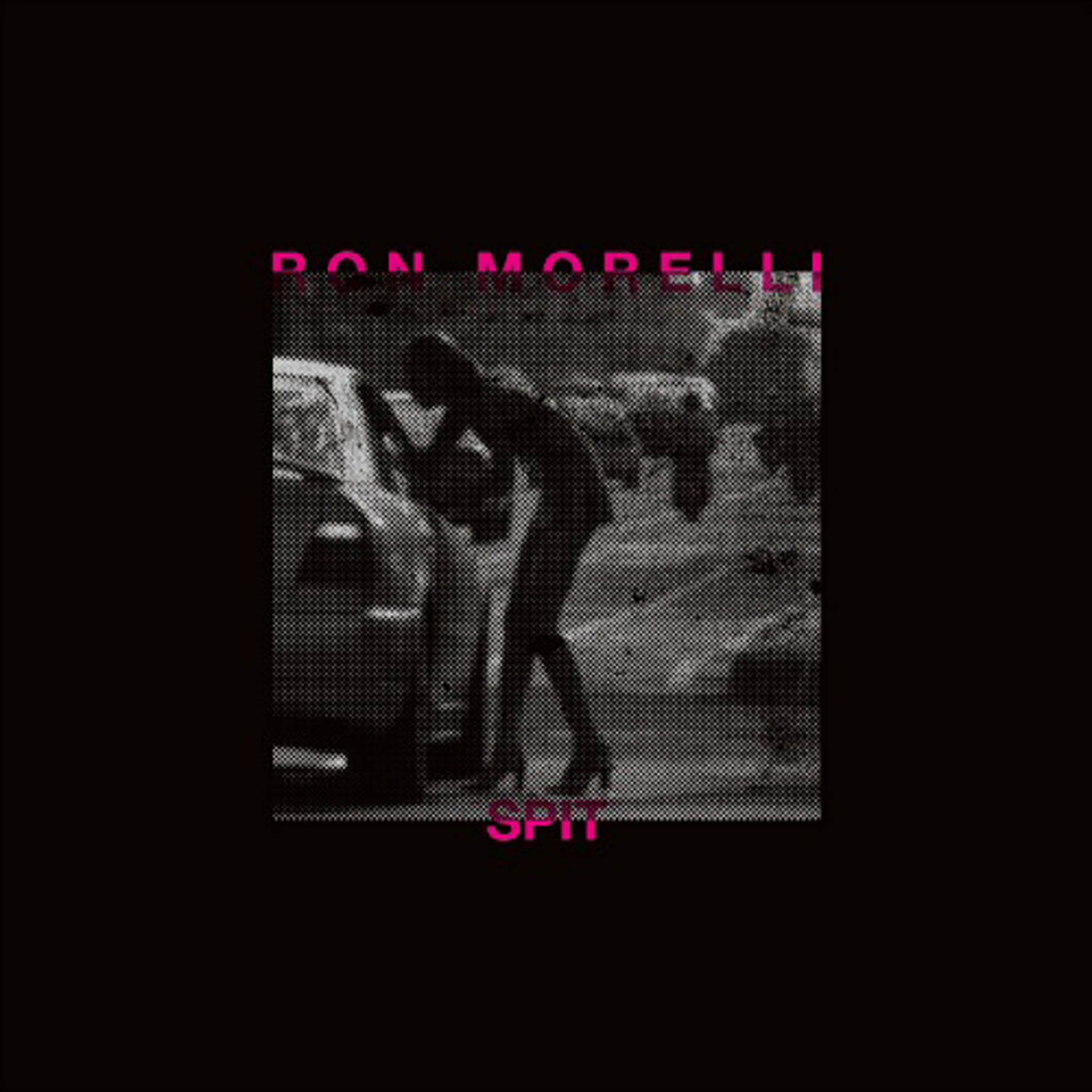
This is kind of an excitedly anticipated album in some circles, as it is the first solo release from the man behind the influential L.I.E.S. imprint.  Morelli's resume is deceptive, however, as Spit is a very backwards-looking, primitive affair rather than a dispatch from the cutting edge or a bold statement of intent.  That said, it is still quite a likable one–it just sounds more like a home-recorded industrial experiment from early '80s Sheffield or Manchester than anything resembling underground dance music circa 2013.
Morelli himself has been quite open about Spit's humble origins, describing it as "stress music jammed out quick and recorded," which is exactly what it sounds like in some ways: it is very grimy, simple, and direct.  In other ways, however, it is a lot better than that sounds, as almost all of these bashed-out variations are built upon very good ideas and there are occasional flashes of playfulness and humor to be found as well.  Also, some pieces are legitimately bludgeoning and heavy, such as the unrelenting machine-like crunch of "Sledgehammer II." If Spit has a shortcoming, it is only that Morelli never allows any of these pieces to expand or evolve beyond their initial motif.
The "Sledgehammer II" vein turns out to be one of the most fruitful threads on the album, as Morelli successfully returns to heavy mechanized rhythms two more times with "No Real Reason" and "Crack Microbes" (which sounds like a darker, blown-out twist on Nurse With Wound's "Steel Dream March of the Metal Men").  Aside from those, the other highlights come right at the beginning of the album, with the brooding, throbbing, and plunging "Radar Variations" and the absurd polka-beat-preset-on-an-old-Casio groove of "Modern Paranoia."  I especially loved the wobbling, sickly, out-of-control synth anti-hook in the latter.
The remainder of Spit is a bit of an unpredictable and perverse mixed bag.  "Slow Drown," for example, is a bit of grinding metallic ambiance, while "Fake Rush" is one of Morelli's ostensible "House variations," though it amusingly undermines its groove with a queasily disorienting and obsessively repeated non-hook.  The most aberrant piece of all, however, is the brief "Director Of...," which combines a jarringly pitch-shifted and willfully annoying synth "hook" with echo-heavy, distorted voices.  I probably would not describe either "Fake Rush" or "Director" as "good," but they are at least interesting and unusual.
I am very curious to see how this album goes over, as I enjoyed it quite a bit, but I tend to enjoy both early '80s industrial and deliberate obnoxiousness much more than most people.  Also, the small pleasures of Spit might be curdled for some people by their expectations, which is a shame, as this album would probably be universally hailed as a minor masterpiece if it were an obscure reissue by Minimal Wave rather Ron Morelli's debut album.  Obviously, I would love to hear what Ron could do if he put some serious time and effort into his work, but that might be a way off, as Hospital already has two sequels in the pipeline.  For now, however, Spit's ramshackle, tossed-off spontaneity is quite endearing in its own right.
 
 
Read More

